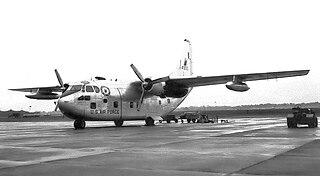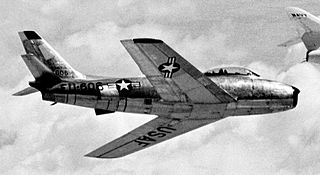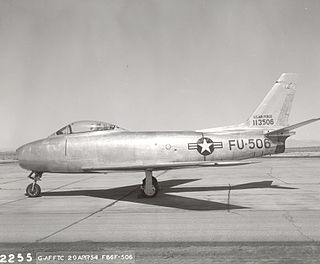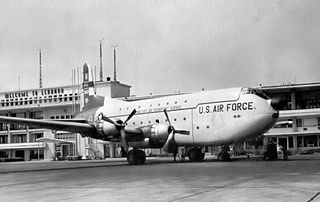
The 309th Maintenance Wing is an inactive wing of the United States Air Force last based at Hill Air Force Base, Utah. On July 12, 2012 it was inactivated and its function became part of the Ogden Air Logistics Complex.

The 336th Air Refueling Squadron is a United States Air Force Reserve squadron, assigned to the 452d Operations Group, stationed at March Joint Air Reserve Base, California. The squadron shares its aircraft and facility with the 912th Air Refueling Squadron, a USAF Associate Unit assigned to the 92d Air Refueling Wing.

The 338th Bombardment Group is a disbanded United States Air Force unit. It was last active with Continental Air Command at O'Hare International Airport, Illinois on 27 June 1949. It was first activated during World War II as the 338th Fighter Group and served primarily as a training unit until it was disbanded in 1944. The group was reconstituted in the reserves in 1947, but was inactivated when military spending was reduced in 1949.

The 496th Tactical Fighter Squadron is an inactive United States Air Force unit, last assigned to the United States Air Forces in Europe, 50th Tactical Fighter Wing, being stationed at Hahn Air Base, Germany. The squadron was inactivated on 15 May 1991.

The 59th Bombardment Squadron is an inactive United States Air Force unit. It was first activated in Panama in 1941 during the expansion of the United States Army Air Corps before World War II. Following the Attack on Pearl Harbor the squadron participated in antisubmarine patrols in the Caribbean Sea and adjoining waters. When the United States Navy assumed this mission in 1943, the squadron moved to the United States and was disbanded.

The 531st Bombardment Squadron was a unit of the US Air Force, first activated during World War II. After training as a heavy bomber unit in the United States, it moved to the Southwest Pacific Theater, entering combat in May 1943, flying combat missions from Australia while attached to the Royal Australian Air Force, earning two Distinguished Unit Citations and a Philippine Presidential Unit Citation. In 1945 it moved forward to the Philippines, then to Okinawa. Following V-J Day, the squadron returned to the Philippines and was inactivated there in February 1946.

The 84th Combat Sustainment Group is an inactive United States Air Force (USAF) group last assigned to the 84th Combat Sustainment Wing at Hill Air Force Base, Utah, where it was inactivated in 2010. The group was formed in 1942 as the 84th Bombardment Group, one of the first dive bomber units in the United States Army Air Corps and tested the Vultee Vengeance, proving that aircraft unsuitable as a dive bomber. As an Operational Training Unit, it was the parent for several other bombardment groups, but from 1943 until it was disbanded in 1944, trained replacement aircrews as a Replacement Training Unit designated the 84th Fighter-Bomber Group.

The 448th Supply Chain Management Group is an inactive United States Air Force unit. Its last assignment was to the 448th Supply Chain Management Wing at Tinker Air Force Base, Texas, where it was inactivated on 30 June 2010.

The 319th Operations Group is a United States Air Force unit assigned to 319th Reconnaissance Wing, Air Combat Command. It is stationed at Grand Forks Air Force Base, North Dakota operating RQ-4 Global Hawk remotely piloted aircraft (RPA) in the intelligence, surveillance and reconnaissance (ISR) role.

The 302d Operations Group is the operational flying component of the 302d Airlift Wing of the United States Air Force Reserve. It is stationed at Peterson Air Force Base, Colorado.

The 46th Bomb Squadron is an inactive United States Air Force unit. It was last assigned to the 319th Operations Group at Grand Forks Air Force Base, North Dakota, where it was inactivated on 16 July 1994.

The 813th Fighter-Bomber Squadron is an inactive United States Air Force unit. Its last assignment was with 482d Fighter-Bomber Group at Dobbins Air Force Base, Georgia.

The 2nd Troop Carrier Squadron is an inactive United States Air Force unit. It was last active in the reserve with the 65th Troop Carrier Group at Mitchel Air Force Base, New York where it was training with Curtiss C-46 Commandos. It was replaced by another unit, which absorbed its resources on 1 April 1953.

The 348th Reconnaissance Squadron is an active United States Air Force squadron, assigned to the 319th Operations Group. It was activated at Grand Forks Air Force Base, North Dakota on 19 September 2011. It currently operates the RQ-4 Global Hawk, High Altitude Intelligence, Surveillance, and Reconnaissance Remotely Piloted Aircraft.

The 738th Expeditionary Airlift Squadron is a provisional United States Air Force unit. It is assigned to Air Combat Command (ACC) to activate or inactivate as needed. It operates Lockheed C-130 Hercules aircraft in theater airlift missions as part of the Global War on Terrorism. Its current status and duty location is undetermined.

The 737th Expeditionary Airlift Squadron is a provisional United States Air Force unit assigned to Air Combat Command (ACC) to activate or inactivate as needed. It operates Lockheed C-130 Hercules aircraft in theater airlift missions as part of the Global War on Terrorism. Its current status and duty location is undetermined.

The 50th Fighter-Bomber Squadron is an inactive United States Air Force unit. It was last assigned to the 319th Fighter-Bomber Group at New Orleans Naval Air Station, Louisiana, where it was inactivated on 16 November 1957.

The 65th Military Airlift Support Group is an inactive unit of the United States Air Force. It was last active as part of Military Airlift Command at Yokota Air Base, Japan, where it was inactivated on 1 June 1972.

The 323d Expeditionary Operations Group is a provisional United States Air Force unit assigned to the United States Air Forces in Europe. As a provisional unit, it may be activated or inactivated at any time.

The 3d Troop Carrier Squadron is an inactive United States Air Force unit. It was last assigned to the 63d Troop Carrier Group at Donaldson Air Force Base, South Carolina, where it was inactivated in 1960.
























